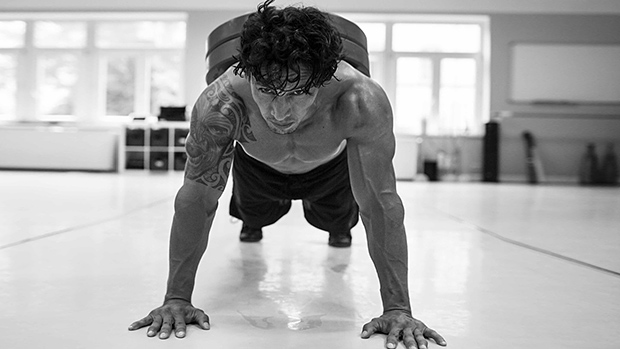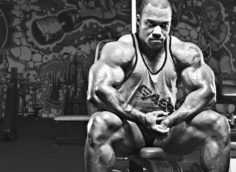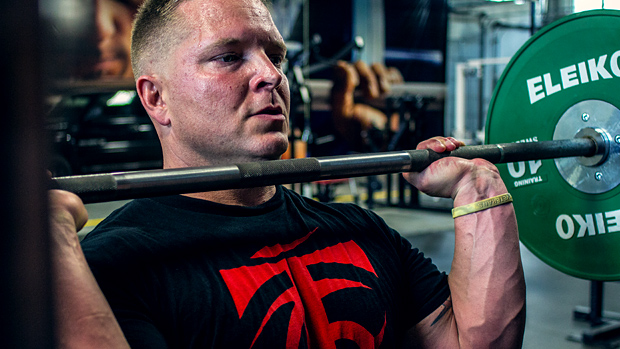When using extra weight on the push-up, proper placement of the load is important to make sure your mechanics stay locked in.
Placing the load too high up on the torso impedes natural scapulohumeral rhythm by pressing against the upper back and scapula. This can create an overly confined shoulder position where you can't properly position your glenohumeral joint.

Plate Too High
This causes inflammation around the shoulder and a reduction in the amount of force you can produce. Push-ups are also one of the only horizontal pressing movements where the scapula aren't locked or fixed against another surface like a bench. Placing the load too high on the torso eliminates this unique feature.
Rather than placing the load high on the middle and upper back, the weight should be placed lower towards the center of mass, near the hips and low back. This forces you to keep the hips tall because a sagging hip position will cause the weights to slide down and off the body.

Correct Plate Position
The direct loading near the lumbar region promotes greater anti-extension and activation in the core as a means of resisting intense vertical forces acting directly on the spine. The low back and hip region also provides a perfect groove for the load to sit in without shifting, especially when you're using optimal spinal alignment with slight yet natural lumbar curvature.
Another benefit is that the low back is narrower than the upper back so you'll be alerted to any deviations in form. Lateral shifting of the hips, asymmetrical pressing, unilateral dipping of either hip, or wiggling of the torso will cause the weights to tilt and slide off.
The lower loading placement also allows for optimal elbow positioning, particularly when using larger 45-pound plates. When the elbows are tucked close to the body (as they should be), the triceps and elbows will run into the plate at the bottom of the movement, creating a slightly restricted position. By placing the plates lower on your torso, the elbows should clear the weight plate, allowing unencumbered movement.
How To Add Bands or Chains
Stretching the bands across the upper back, in-line with the chest, promotes a hand position that's too far forward (close to the neck), which leads to scapular elevation and elbow flare.

Band Too High
When using band resistance (or chains), place the band towards the mid-lower back to produce a better angle of pull against the arms and hands.

Correct Band or Chain Position
This helps you get a better elbow tuck and depression of the scapula.




